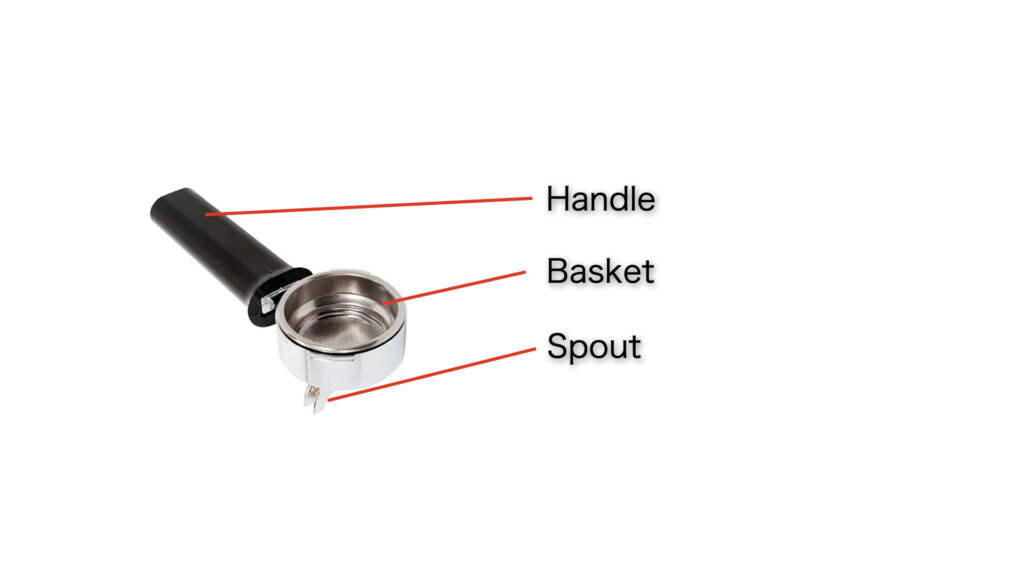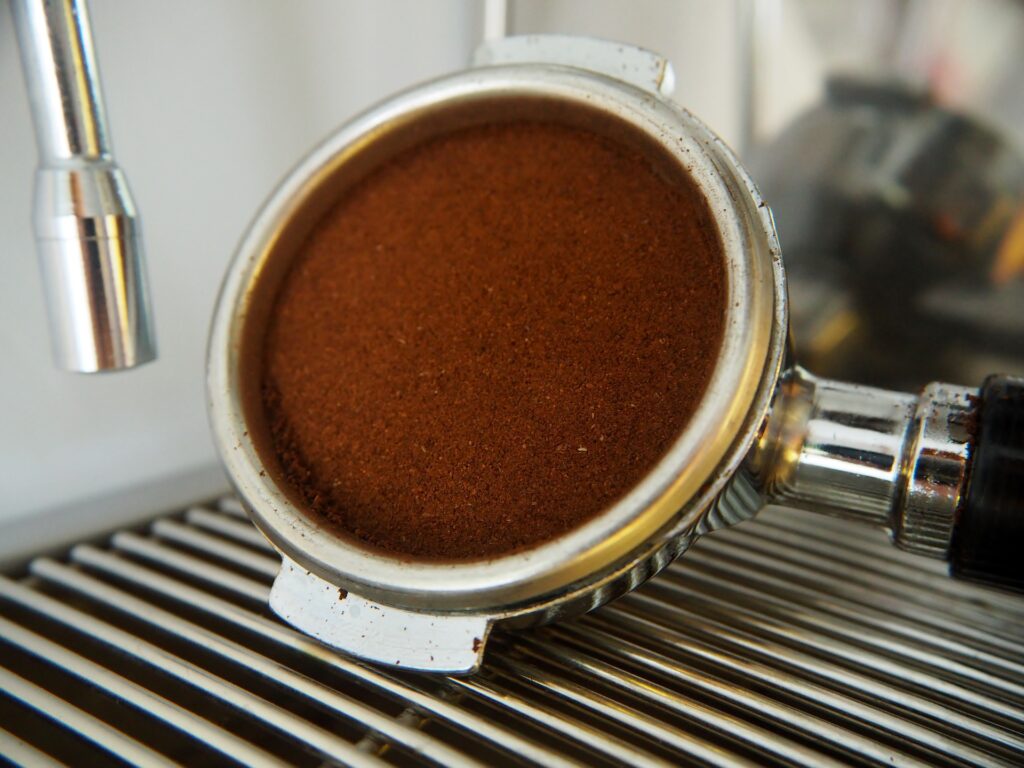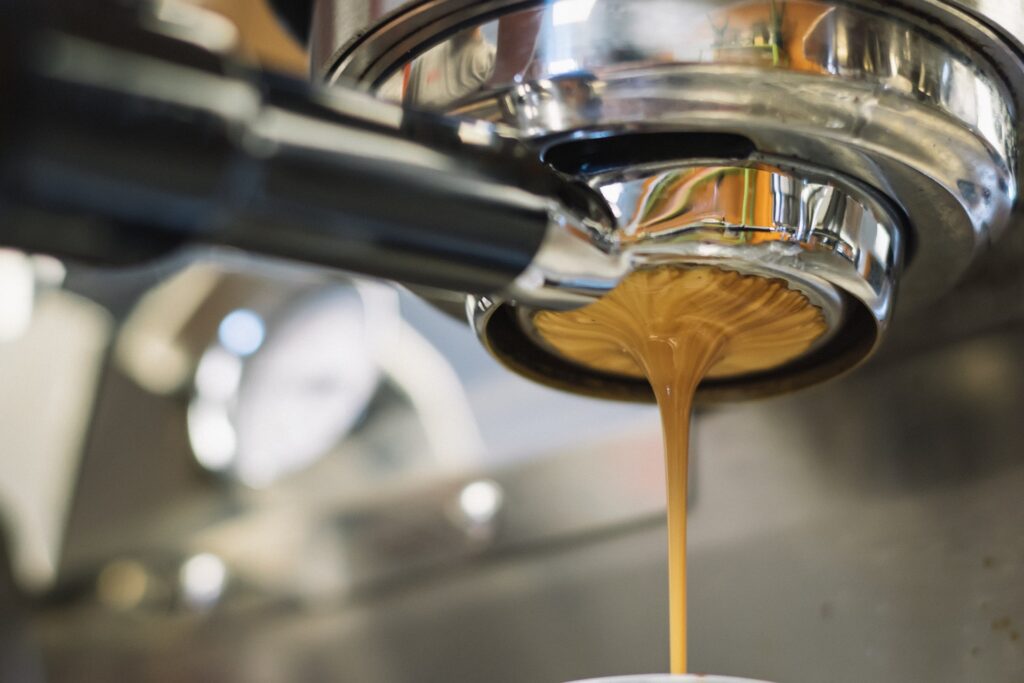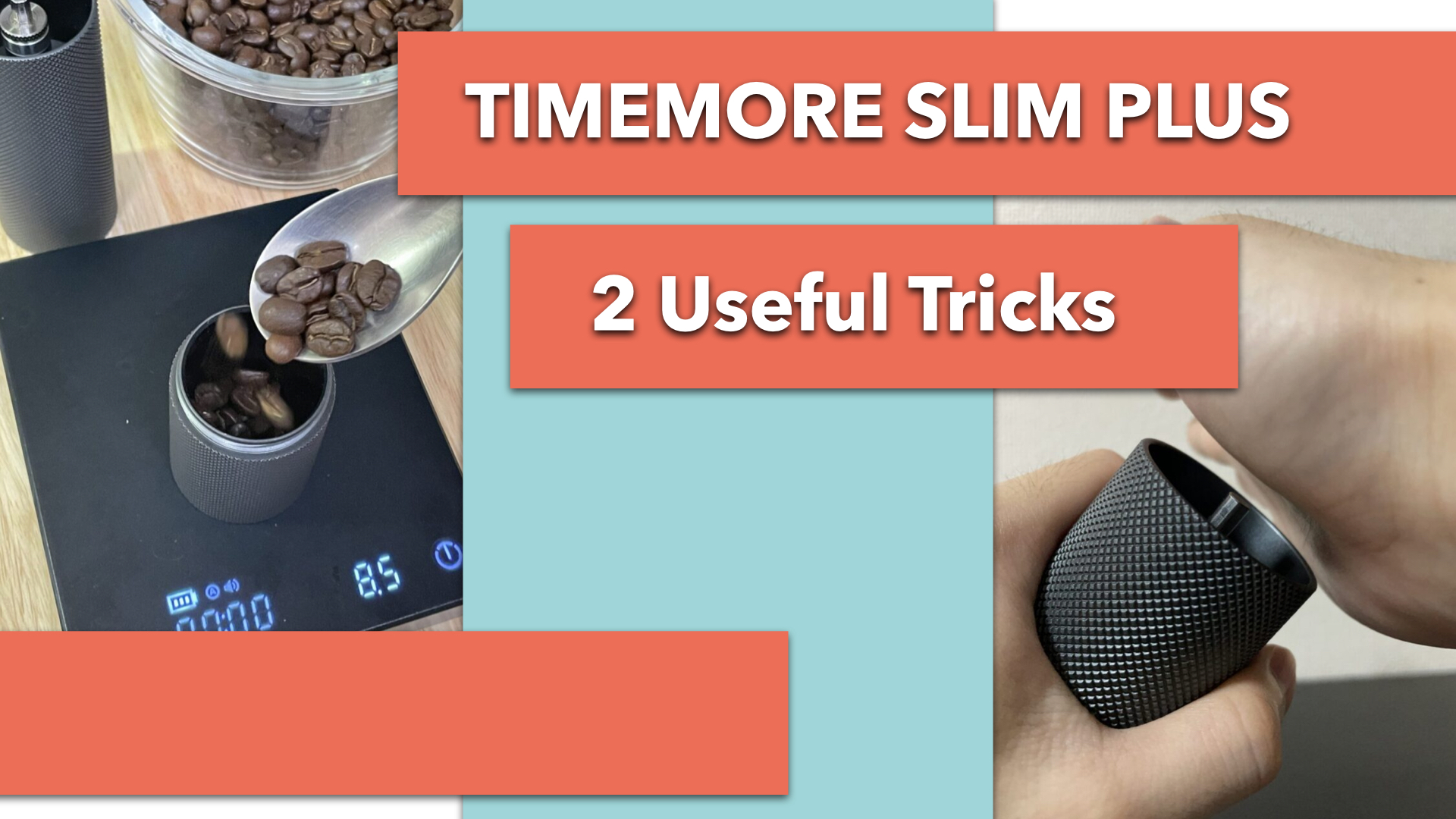Hi everyone!
This post will explain about the portafilter, which is most likely the part that you will be interacting with the most while using your espresso machine. By the end of this post, you will understand, what a portafilter is, the differences between portafilters and which one you want.

The portafilter holds the basket in the machine. For most espresso machines the portafilter is placed at the center of the machine.

The basket is attached at the end of the portafilter. As the name suggests the basket has tiny holes in the bottom. Extraction takes place by passing pressurized hot water through the coffee grounds in the basket. The extracted espresso gets collected and flows out of the spout of the portafilter.
The coffee grounds which is placed in the basket and tamped (compacted by pressing down on the grounds by a tool called the tamper) is called a coffee puck.

The purpose of the portafilter is to make the basket easily detachable from the machine, so as to ease the puck preparation. Also it makes it easer to dispose of the puck after its extracted.
For low cost “appliance grade” espresso machines, often they do not have a portafilter. These machines cannot produce true espresso in general. They are usually intended to make something similar to espresso. Of course if this is what you want, appliance grade machines can be a viable option, but if you are serious about coffee and want to make espresso, you need to stay away from appliance grade machines.
There are several factors which differentiate portafilters. Let’s have a look.
Size : 58mm are the best!
First, portafilters have as size. This size is defined by the size of the basket the portafilter holds. (Not the size of the handle).
For commercial and high-end home espresso machines, the current standard size of baskets is 58mm. For these baskets, you want a 58mm portafilter.
In the past, 54mm baskets were the standard, so this size is rather common as well. For low-end or appliance grade machines, some use smaller and non-standard sized portafilters.
The size of the portafilter you can use is defined by which machine you have. If you want to have the best chance of making good espresso, you want to look for machines which use 58mm portafilters.
The main reason is, by using the most standard size you get the most options in terms of baskets you can use. This will allow you to get higher quality baskets as well. Also you will have more options for other accessories such as shower screens which disperse water more evenly on your coffee puck.
By having a large diameter for the basket, you can use more coffee without increasing the thickness of the puck. The thicker the puck, the more pressure is required to push through. 58mm gives you a good balance in this aspect as well.
The reasons some machines use smaller non-standard sizes could be that the machine does not have enough space, or it’s pump could be too weak to apply enough pressure on a larger puck, or the manufacturer wants to force you to buy spare parts from them rather than from standard alternatives. They usually tend to be negative reasons.
As mentioned, portafilters are defined by the size of the basket they hold. But it does not necessarily mean that all 58mm portafilters are interchangeable. Some portafilters could have non-standard external diameters or tabs (which lock in the portafilter to the machine) could be different sizes or shapes.
There is a standard size and shape which makes most portafilters compatible, but please check that the portafilter you are planning to buy does indeed work with your machine.
Spouts : Bottomless is recommended
Spouts are another differentiating factor of portafilters. Spouts are attached below the basket and control the flow of espresso.
There are in general 3 types of spouts.
- Single spout
- Double spout
- Bottomless

まずシングルとダブルは名前のままで注ぎ口が1つか2つあるタイプです。ダブルスパウトは一度に抽出したエスプレッソを2つのカップに分ける際に使われます。もちろんダブルスパウトの2つの注ぎ口に被るように1つのカップを置けば全て同じカップに入るので、シングルスパウトのように使うことができます。このためダブルスパウトを使うのが一般的で、シングルを使うケースはそれほどありません。
First the single and double spout are straight forward, they either have one or two spouts. Double spouts are useful when you want to split a double espresso in to to cups for 2 single shot espressos. If you place the 2 spouts on top of a single cup, all the espresso will flow in to the single cup, so it can be used as a single spout portafilter. For this reason, you tend to see double spout portafilters used in most cases.
The bottomless portafilter has no spout. It is also called naked portafilters. These have an wide open bottom so that the bottom of the basket is clearly visible. This actually is a key advantage of bottomless portafilters.
With bottomless portafilters, you can observe the extraction of espresso. The way espresso flows out is a great indicator of how the extraction is occurring and can guide you to identifying many extraction defects. For beginners especially, bottomless portafilter can be a great tool of learning.

For example, if the espresso does not come together to a single stream, or it is flowing out in an unbalanced way, you can expect that some parts of your puck are more dense than others and the flow and pressure is uneven. Another thing you could observe is spurting, which is when a jet of water shoots out. When this happens you know that a channel has formed in your puck. A channel is like a hole in the puck which forms when you have too much flow or pressure on one part of your puck. By observing these flows, you can understand the defects in your puck preparation.
Another added bonus of bottomless portafilters is that they have a flat bottom. This makes it easier to tamp.
Finally, but not having the spout, you get more clearance from the basket to your cup. This will let you use bigger cups or scales.
I have written quite a few benefits, but there are drawbacks as well.
The obvious one is that you will not be able to split your espresso like you can with double spouts. (Well you can always manually pour and spit the espresso, so no worries here)
The more significant drawback is that since the bottom of the basket is exposed, when channeling occurs, espresso may spurt out in unexpected directions which may make a mess around your machine. Make sure you don’t have anything you could damage or stain close by when using bottomless.
This isn’t necessarily a fault of the bottomless portafilters, but some machines do not come with a bottomless portafilter included. So it may cost you extra money to purchase.
Having coved both the Pros and Cons, I believe the benefits out weigh the drawbacks by a great deal.
So we took a look at portafilters in this post. Now you understand the size and spout differences, and what you should look for when looking for your new espresso machine.
I will explain a bit more about the baskets in a future post.
What size portafilter do you want or already own? Love to find out in the comments!




コメント